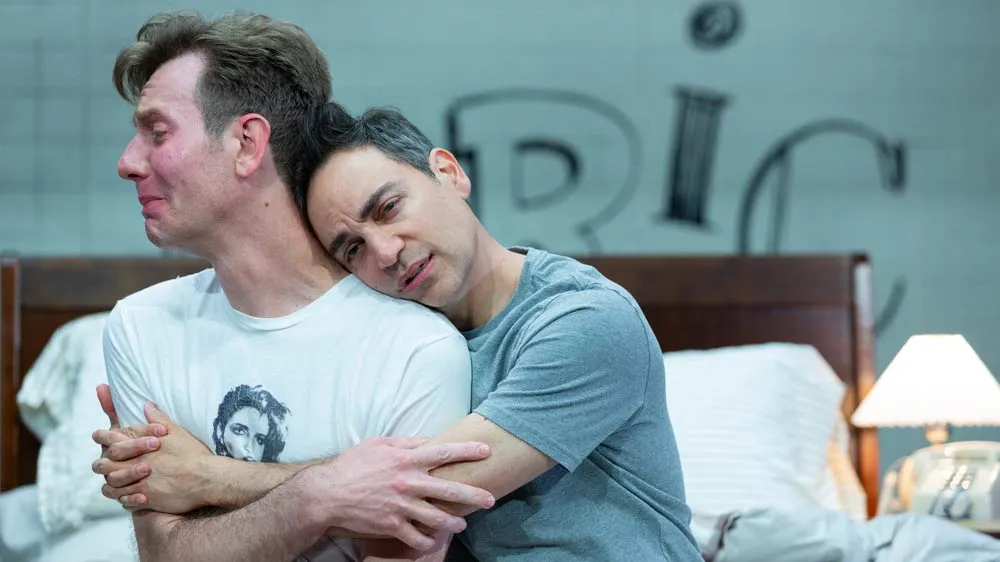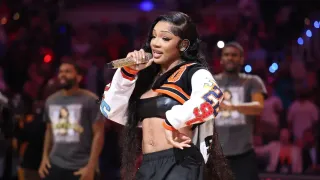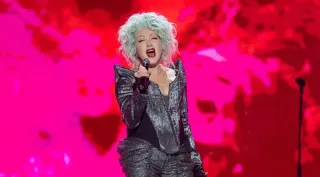April 24, 2014
The Wholehearted
Michael Cox READ TIME: 6 MIN.
The one filmic technique that the theatre longs for more than any other is the close-up, in particular the close-up of the face. This simple device, a well-establish part of our motion-picture language since the Lumiere brothers shot 20 second clips of babies eating, allows us to look deeply into the eyes of a person and read the subtlest nuances of their expression. With this shot we can tell if someone is lying or telling the truth, and with this shot intimacy doesn't need to be exaggerated so that it can be understood on the back row of the theater.
In television and Internet video the close-up is used even more because the screens are smaller, and the type of shots we use reflect subjects we choose to capture. The close-up lends itself to narratives that are understated and introspective.
The black box as a performance venue is the theatre's answer to the close-up. If you've ever paid an outrageous amount of money to sit in the back row of someplace like the Boston Opera House just so that you could watch tiny little figures running around on a stage, you know the appeal of a black box. The personal, character driven story can't help but suffer in an enormous space, because it's hard to examine the complexity of a character's psychological motivations when you can't see their face.
Stein/Holum Project brings the power of the close-up to the Arts Emerson Jackie Liebergott Black Box in "The Wholehearted," (in the Emerson Paramount Center through April 27.) Not only is this play staged in an intimate setting, it uses video projection to bring the audience even closer to co-director and solo performer Suli Holum's nuanced performance. The visual, sound design and plethora of live and video effects are so vibrant and compelling, it's unfortunate they can't accompany a better script.
"The Wholehearted'' tells the fictional story of Dee Crosby, a boxer who pursues the love of the woman she left to pursue her career. Trained as a dancer, Suli Holum has crafted her physique to be the quick, powerful and sinewy presence that compels us to watch prizefighting, this exciting sport of blood and violence, torn lips and swollen eyelids.
We can only assume it was ambition that led Dee to leave her young lover Carmen and marry her stereotypically despicable trainer Charlie Flaxon, the hick with a leering southern drawl strait out of "Deliverance." But when she achieves success and fortune her heart's desire leads her back to Carmen, the hot girl she made out with in the desert as a teenager. Charlie's jealousy of this leads him to shoot and stab his wife.
In order to justify the video effects, the production team came up with the plot device of Dee trying to win back Carmen by recording a video letter for her. This was one of the best decisions they could make, because it adds some plot and conflict to what is essentially just an event.
The problem with this plotting is it's so innately one-sided. Dee hasn't been with Carmen for 20 years. What does the adult Carmen want? She isn't present in this story. Would Carmen even take her back? We don't know. Holum does a marvelous job mimicking the remember voice of her former girlfriend -- the actress can clearly play multiple characters -- but the main character, Dee, has no insight into Carmen's feeling. As a character, Carmen is as insubstantial and empty as the piece of clothing (a scarlet neglig�e) that's used to indicate her.
If there is a perceived threat of Carmen not taking Dee back, we don't see it. She doesn't have the slightest worry that it might be hard for them to pick-up where they left off.
Then there's the problem of Dee's marriage. Why does a lesbian or bisexual woman, clearly in love, choose to leave her female lover to marry a man? Is she afraid? Does she need to be controlled? Perhaps it is because this Charlie can advance her career, and she feels like she can control his violent side. These would be interesting subjects in a play, but they're not in this play.
Instead this play focuses on the event of a woman getting stabbed and shot, all the while claiming that it doesn't want to be a play about victimization. If you don't want a character to be perceived as a victim then make them a real person, a fully-drawn human being.
Instead writer Deborah Stein tries to make this play a revenge tragedy, by turning abuse into aggression. The only problem is Dee doesn't actually do anything. She only threatens to do something. Dramatically, as often in life, "words without deeds" go nowhere.
"It's not my place to moralize or offer judgments," said Stein about Dee's threat to go back and shoot her husband after the law fails to punish him adequately.
But is it not her place to show that anyone else might have an opinion about the moral implications of blood atonement? I assume the law has an opinion about that. What about the character herself? Hamlet is not interesting because he kills his uncle at the end. He's interesting because he spends an entire play not killing his uncle.
"The Wholehearted" brings up none of the interesting ideas inherent in the subject matter -- justice, forgiveness, self-destruction, co-dependence, gender roles and politics, ambition versus love... or even the human lust for violence in sports and in life.
After the show, an audience member said, "I enjoyed it, but I can't tell you what it was about. I'm still not sure what exactly happened." That's not a good sign.
When early soviet filmmakers started experimenting with film form and language they juxtaposed two close-up shots next to each other, an actor's face and a bowl of soup.
Audiences said, "He looks so hungry."
Then they juxtaposed that same shot of an actor's face next to an image of a dead child. Audience said, "I've never seen an actor play grief so well."
In reality the actor wasn't looking at either of those things. The human face is not just one thing. It's complex and multi-dimensional, beautiful, funny, ugly, sad and mysterious.
Human beings are puzzle and incredibly self-destructive. (Some consider boxing one of the more self-destructive sports.) And most of us are our worst enemies. Abusive husbands are sometimes sweet and powerfully sexy.
And young girls are more than just objects of desire. (This last idea is so important. If these theatre artists are concerned about the way they portray women on stage they should concern themselves with this.)
Without careful contemplation of the characters we create and the stories we tell what are we are left with?
Style is an amazing tool, and it has the ability to subvert our attention from substance. Filmic techniques can draw us in and give us the illusion of truth. And few tools have the imaginative powers of the close-up.







